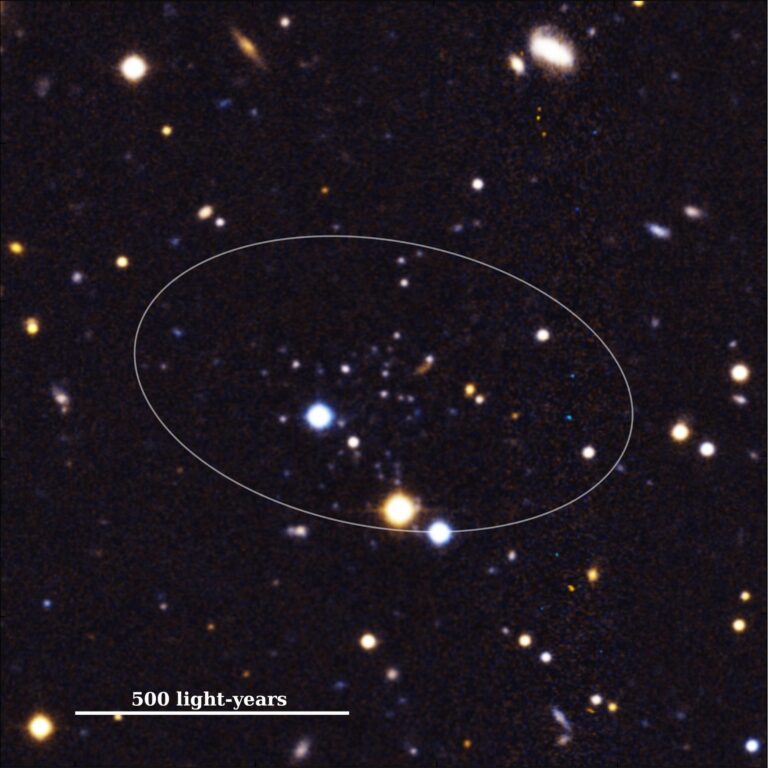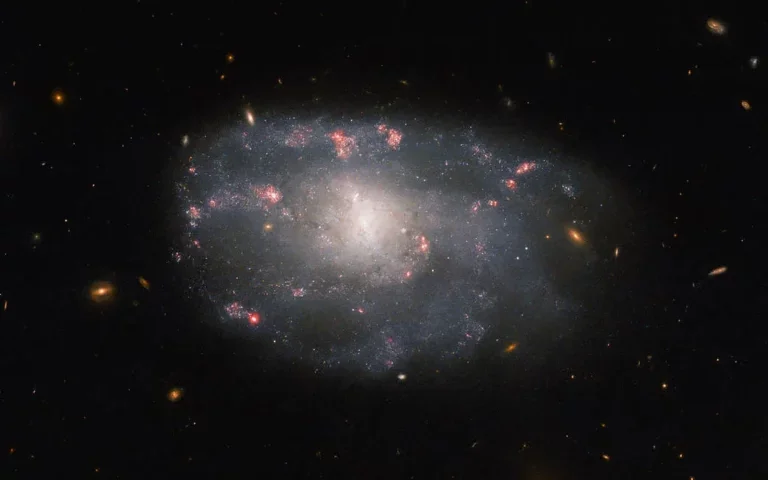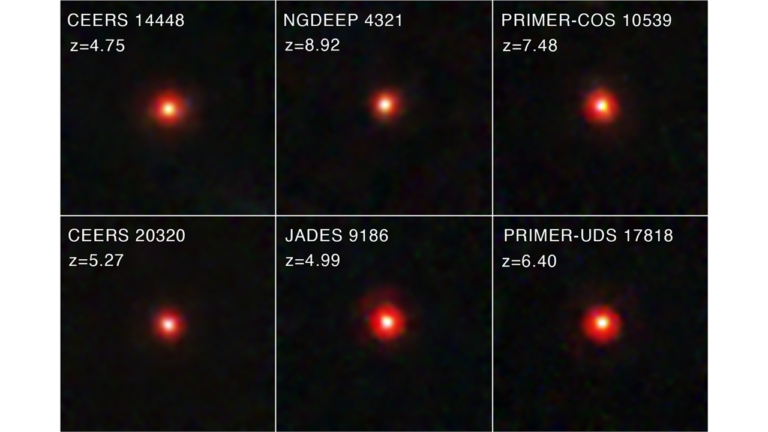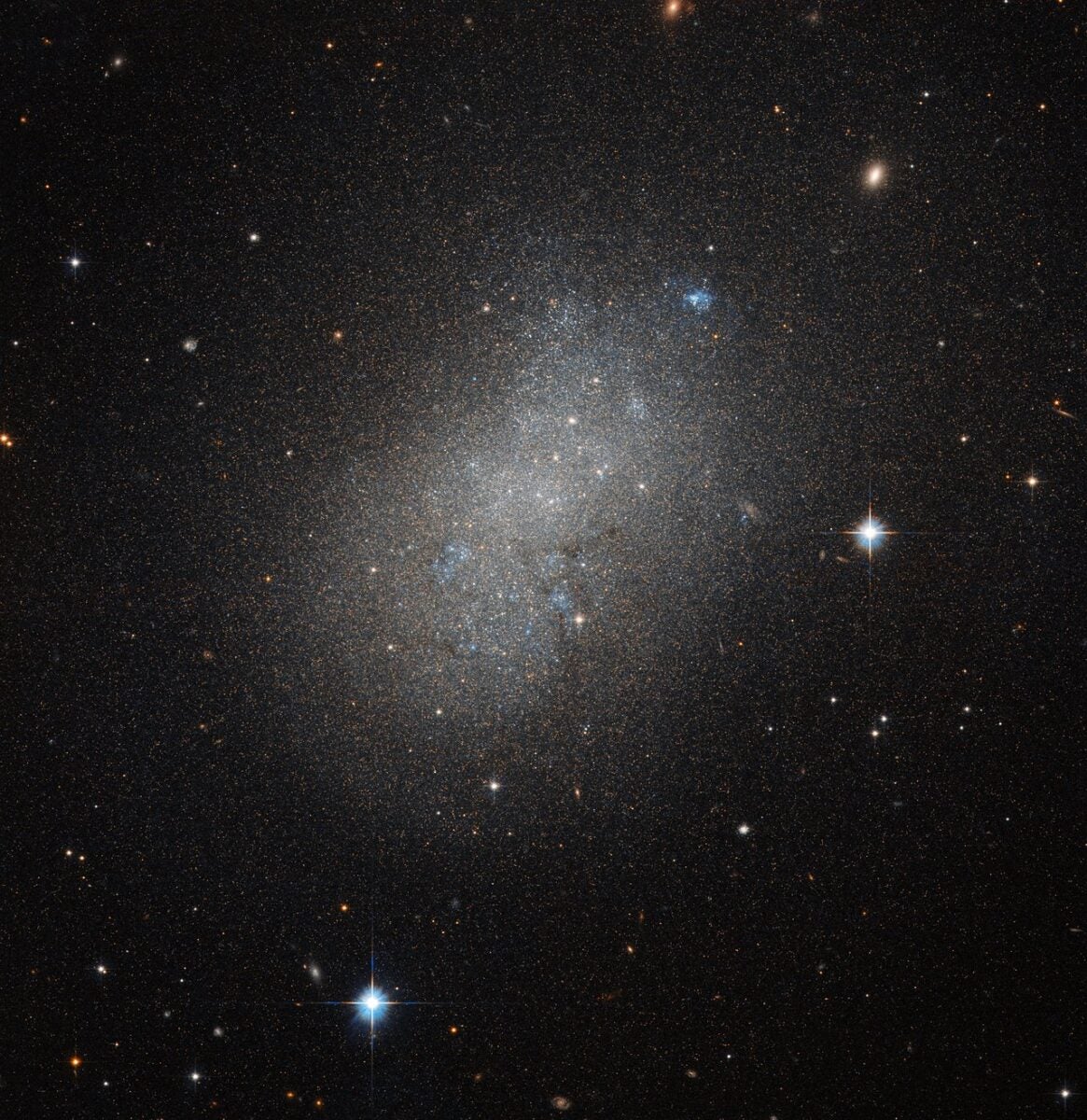
It’s well known that all massive galaxies like the Milky Way host supermassive black holes millions to billions of times the mass of the Sun in their centers. These galaxies and their black holes are intertwined, with the evolution of one significantly impacting the evolution of the other.
But what about lower-mass galaxies, such as dwarfs? Astronomers aren’t yet sure whether these galaxies follow a similar trend, hosting lower-mass black holes simply called MBHs (massive black holes) weighing thousands to millions of solar masses. Because dwarf galaxies — and thus, their central black holes if they exist — are fainter, they are more difficult to study. But dwarf galaxies offer extremely valuable clues for learning about conditions in the early universe, because the population of modern-day dwarfs allows astronomers to work backward to determine how early galaxies were “seeded” — i.e., how their black holes were born and whether these black holes were more or less massive relative to the galaxy’s overall mass.
A host of questions remain: Do all low-mass galaxies host massive black holes, or might some not have central black holes at all? Furthermore, how many low-mass galaxies have black holes that are actively feeding? How do these black holes affect their hosts galaxies? And do MBHs in low-mass galaxies accrete matter in the same way as their supermassive counterparts?
Answering these questions will allow astronomers to better understand how galaxies evolve.
Looking for massive black holes
While at the Max Planck Institute for Extraterrestrial Physics in Germany, Riccardo Arcodia (now at the MIT Kavli Institute for Astrophysics and Space Research) set out to answer the last question: “to study the accretion mode of low-mass galaxies — which we thought was the easiest problem of these!” he said during a presentation Tuesday on the work at the 244th Meeting of the American Astronomical Society in Madison, Wisconsin.
Actively feeding black holes shine brightly across the electromagnetic spectrum, allowing astronomers to spot them in many ways. When a black hole is pulling in material, that material forms an accretion disk, which gives off infrared and visible light from farther out and whose brightness varies over time. Feeding black holes also emit high-energy X-rays, which come from a corona that sits close to the black hole.
Multiwavelength astronomy allows researchers to identify objects using different types of light, which can offer a complementary way of looking at the universe. In this study, Arcodia and his team first identified dwarf galaxies whose centers showed the telltale signs of MBHs through varying infrared and optical light. They then looked for these galaxies in the eROSITA all-sky survey, conducted at X-ray wavelengths by the Spectrum-Roentgen-Gamma mission.
“The advantage here is that since we know there is a black hole and that it’s active … just by studying the X-rays of this sample, we should be really just worrying about the accretion mode,” Arcodia explained.
What they found was surprising: Of more than 200 galaxies showing signs of an MBH in visible or infrared light, only 17 were emitting X-rays.
That’s odd, because accreting black holes should give off X-rays. Particularly because “the predicted X-ray luminosity of most of these candidates should be well above the detection limit of the eROSITA all-sky survey,” said Andrea Merloni, eROSITA’s principal investigator and a co-author on the paper, which has been accepted for publication in Astronomy & Astrophysics, in a press release.
In other words, “we could have detected an X-ray MBH if it were there … but we didn’t,” Arcodia explained. Aside from the 17 detections, the rest of the galaxies only had X-ray emission consistent with a normal galaxy that doesn’t contain an accreting black hole, despite the fact that astronomers knew there should be one present based on other wavelengths.
So, Arcodia said, most of the low-mass galaxies they observed must therefore contain underluminous accreting black holes that are not feeding in the ways astronomers would expect.
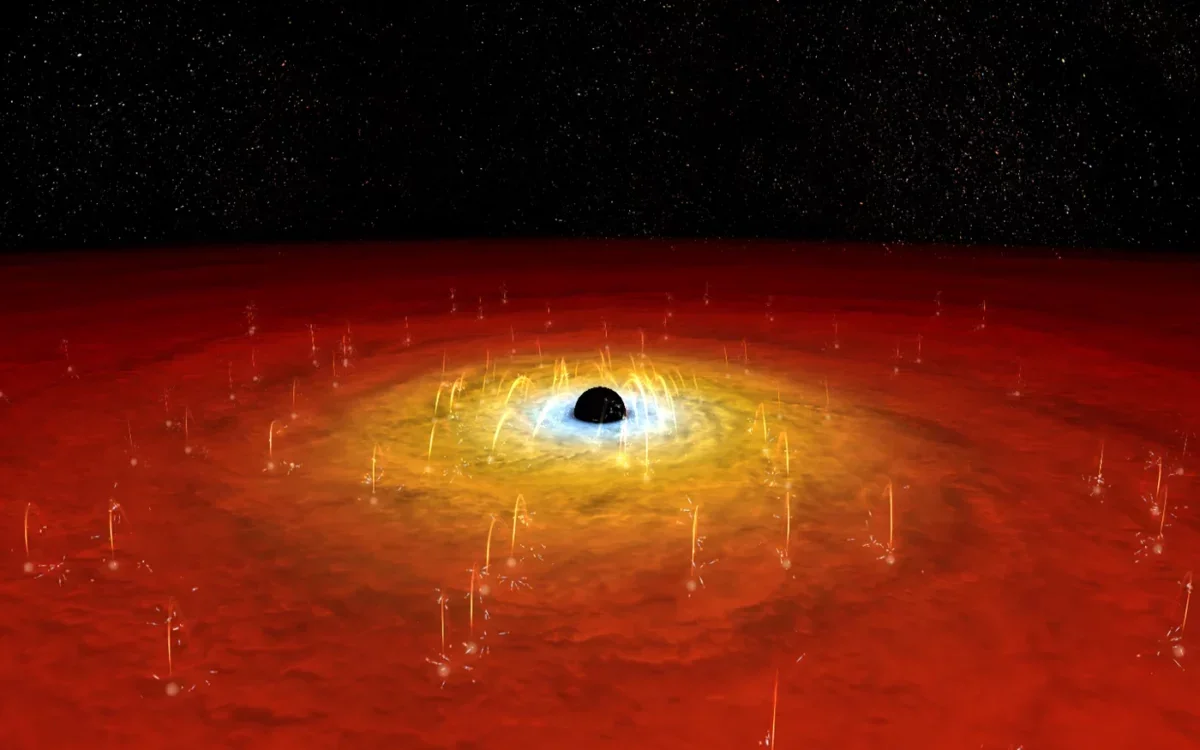
Different environment, different accretion
This disparity, he said, could be due to one of two things. First, maybe the MBHs in low-mass galaxies simply don’t produce X-rays as efficiently as their higher-mass counterparts. Or second, maybe MBHs in low-mass galaxies don’t accrete matter in the same way as black holes in more massive galaxies. This idea, Arcodia added, “is what I’m leaning towards, so effectively no single band selection,” or observation in a given wavelength regime of light, “would be representative of the whole population. You need to sort of combine them all to have a clear picture” of how MBHs in low-mass galaxies act before astronomers can move on to answer the question of whether all dwarf galaxies host MBHs.
There are several reasons to suspect this latter conclusion, Arcodia said. Unlike larger galaxies, dwarf galaxies are clumpier, with their stars and gas distributed more unevenly — and thus can’t feed the black hole in the same way as in a more massive galaxy, where most material is concentrated in the center. Additionally, studies have found that MBHs in dwarf galaxies tend to be offset from the galaxy’s center, which further affects the nearby material available to feed the black hole. Both of these factors could affect the magnetic field close to the black hole, which in turn could have an impact on the production of X-rays.
Finally, there is evidence that lower-mass galaxies experience shorter, more transient accretion events — such as the black hole interacting with or even swallowing up a single star — that are not as long-lived as the longer-term accretion that can be sustained in larger galaxies, again with more material available to funnel into a black hole.
So, despite the fact that astronomers understand fairly well the relationships between massive galaxies and their supermassive black holes, this work shows that “dwarf galaxies and low-mass galaxies are way more complicated than massive ones,” Arcodia said.






